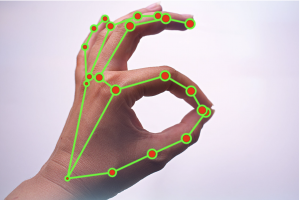In the digital age, our presence on the internet is more significant than ever before. Whether we are aware of it or not, the way we present ourselves online can shape how others perceive us, and can influence our personal and professional relationships. Two important concepts in this context are “web identity” and “web personality.” While they may seem similar, they have distinct meanings and implications. Let’s explore the differences between these two terms.
Web Identity: The Core of Your Online Presence
Web identity refers to the factual, often verifiable, information about you that exists online. It is your digital fingerprint, composed of elements such as:
- Username and Passwords: The credentials you use to log into various online platforms.
- Personal Information: This includes your name, email address, phone number, and other contact details.
- Professional Details: Information related to your career, such as job titles, company names, LinkedIn profiles, resumes, and portfolios.
- Accounts and Profiles: The accounts you have on social media, websites, forums, and other online platforms.
Web identity is about the data that defines you in the digital world. It can be compared to a digital ID card that people use to identify you across different platforms. Ensuring the security and accuracy of your web identity is crucial as it forms the basis of your online interactions.
Web Personality: The Flavor of Your Online Presence

Web personality, on the other hand, is about how you express yourself online. It’s the voice, tone, and style you use when interacting with others on the internet. Your web personality can be seen in:
- Social Media Posts: The type of content you share, your comments, and the tone of your interactions.
- Blog Posts and Articles: Your writing style, the topics you choose, and the way you present your ideas.
- Engagement: How you engage with others, including your responses to comments, participation in discussions, and your approach to online communities.
- Visual Identity: The images, memes, videos, and other visual content you share that reflect your personality.
While web identity is about “who you are,” web personality is about “how you are.” It’s the personal touch you bring to your online presence, the characteristics that make your digital persona unique and relatable.
Web Identity vs. Web Personality: Understanding the Key Differences
Here’s a table to clearly illustrate the differences between web identity and web personality:
| Aspect | Web Identity | Web Personality |
|---|---|---|
| Nature | Static & Verifiable | Dynamic & Expressive |
| Components | Login Credentials, Personal Information, Professional Details, Account Profiles | Social Media Interactions, Writing Style, Engagement Approach, Visual Content |
| Purpose | Establish Presence & Verification | Communication & Engagement |
| Security | High Priority to Prevent Identity Theft | Focus on Managing Perception |
| Perception | How Others Find and Verify You | How Others Perceive and Relate to You |
| Examples | Username, Email Address, LinkedIn Profile | Tweets, Blog Posts, Comments, Shared Images |
Key Differences Explained
1. Nature
- Web Identity: It is static, meaning it doesn’t change frequently. It is based on factual and verifiable information.
- Web Personality: It is dynamic and expressive, constantly evolving with your interactions and engagement online.

2. Components
- Web Identity: Comprises login credentials, personal information, professional details, and account profiles. These are the foundational elements that form your digital fingerprint.
- Web Personality: Includes your social media interactions, writing style, engagement approach, and visual content. These elements give character and depth to your online presence.
3. Purpose
- Web Identity: The primary goal is to establish your presence and provide a means for others to verify your identity.
- Web Personality: Focuses on how you communicate and engage with others, showcasing your individuality and style.
4. Security
- Web Identity: Requires high security to protect against identity theft and ensure privacy.
- Web Personality: While it also needs to be mindful of privacy, the emphasis is on managing how you come across to others.
5. Perception
- Web Identity: Determines how others can find and verify you online.
- Web Personality: Influences how others perceive and relate to you based on your online behavior and content.
6. Examples
- Web Identity: Username, email address, LinkedIn profile – these are static elements that are used for identification.
- Web Personality: Tweets, blog posts, comments, shared images – these dynamic elements reflect your unique traits and interactions.
Why Both Matter
Both web identity and web personality play crucial roles in the digital world. A secure and accurate web identity helps you maintain control over your personal information and ensures that you can reliably represent yourself across various platforms. Meanwhile, a well-crafted web personality can help you build relationships, establish trust, and create a memorable online presence.
In an era where digital interactions are becoming as significant as face-to-face ones, understanding and managing both your web identity and web personality can significantly impact your personal and professional life. By being mindful of these elements, you can navigate the online world more effectively, ensuring that you are both identifiable and relatable to those you interact with.
Conclusion

Understanding the distinction between web identity and web personality is crucial in the digital era. Your web identity is the foundation of your online presence, providing necessary information for verification, while your web personality adds character and depth, helping you connect and engage with others effectively.
At Nice Future Inc., we’re dedicated to helping you navigate these aspects of your digital life. We offer tips and guidance to ensure your online presence is both secure and engaging. If you have any other requests for new topics or would like to work with us, feel free to reach out. We’re here to support you every step of the way. Until next time!
Subscribe to our newsletter!




